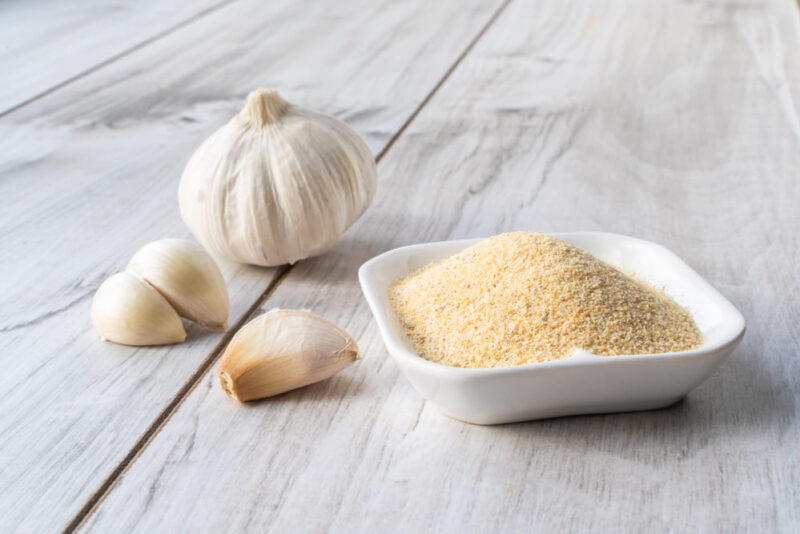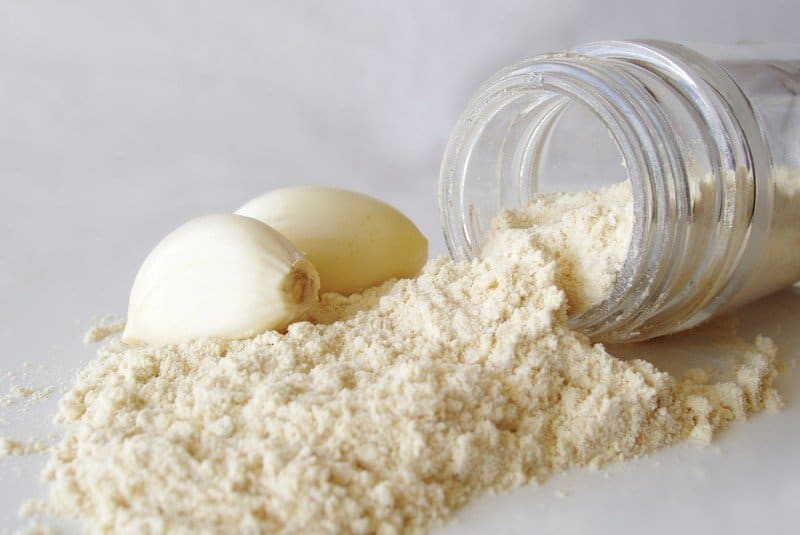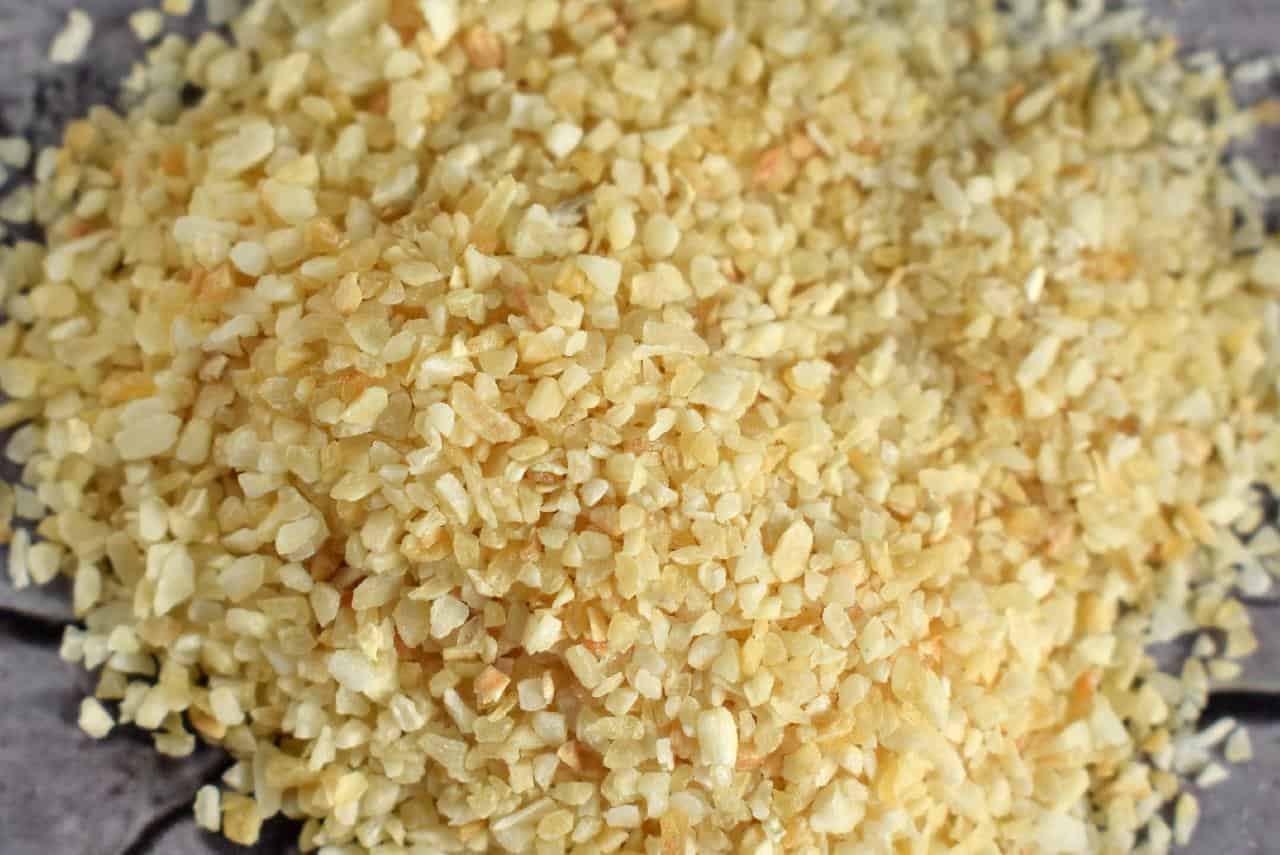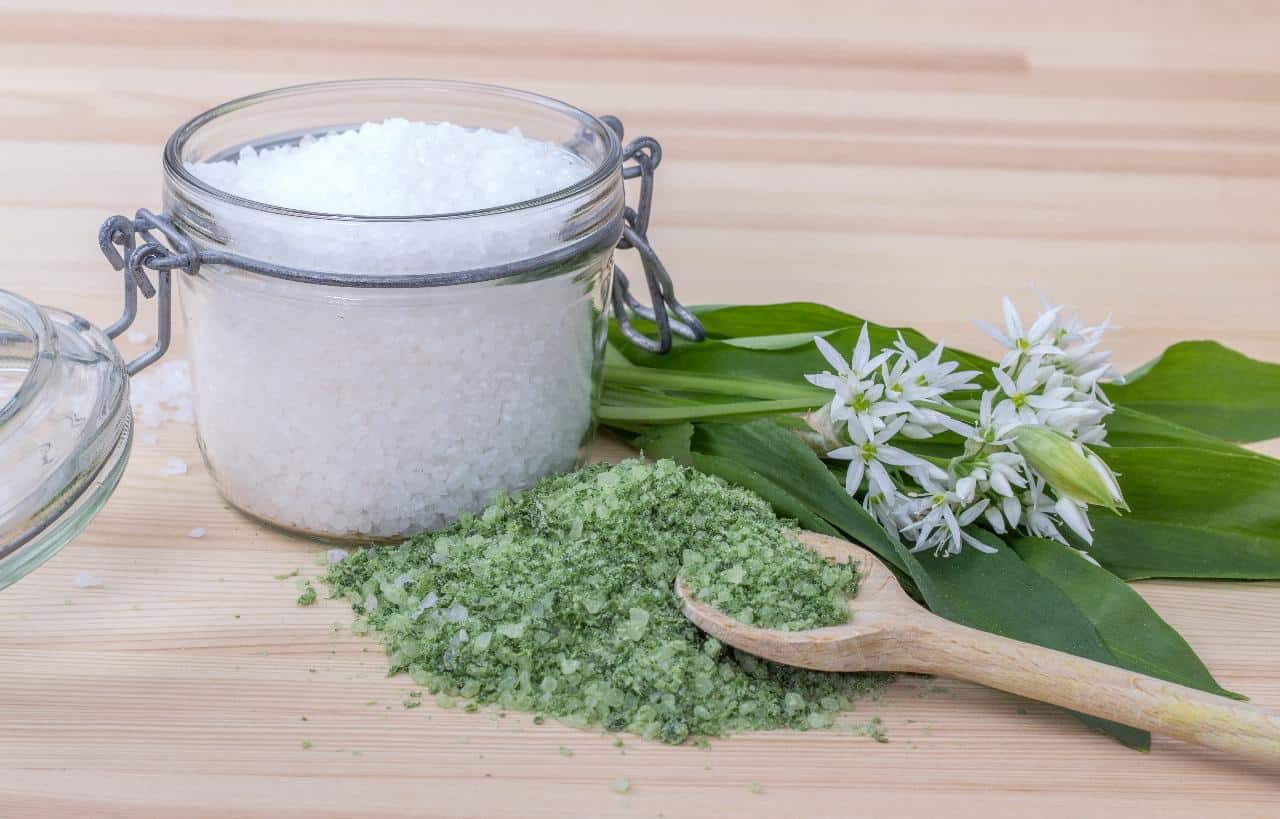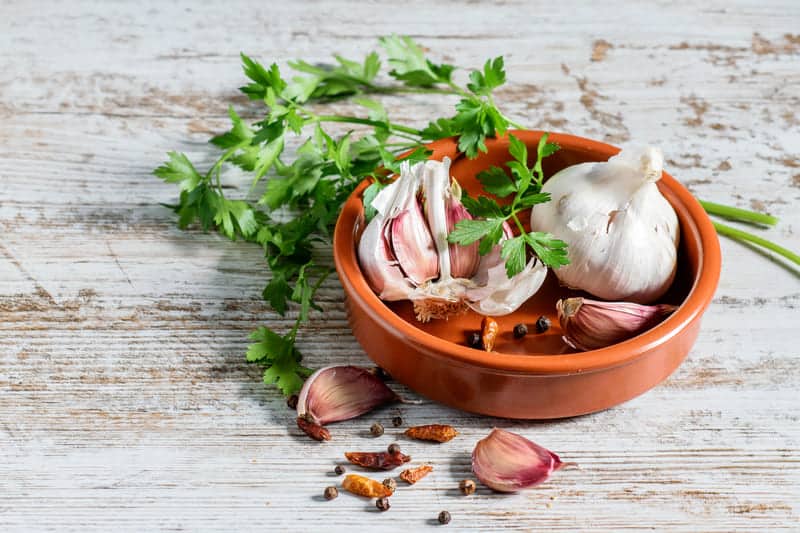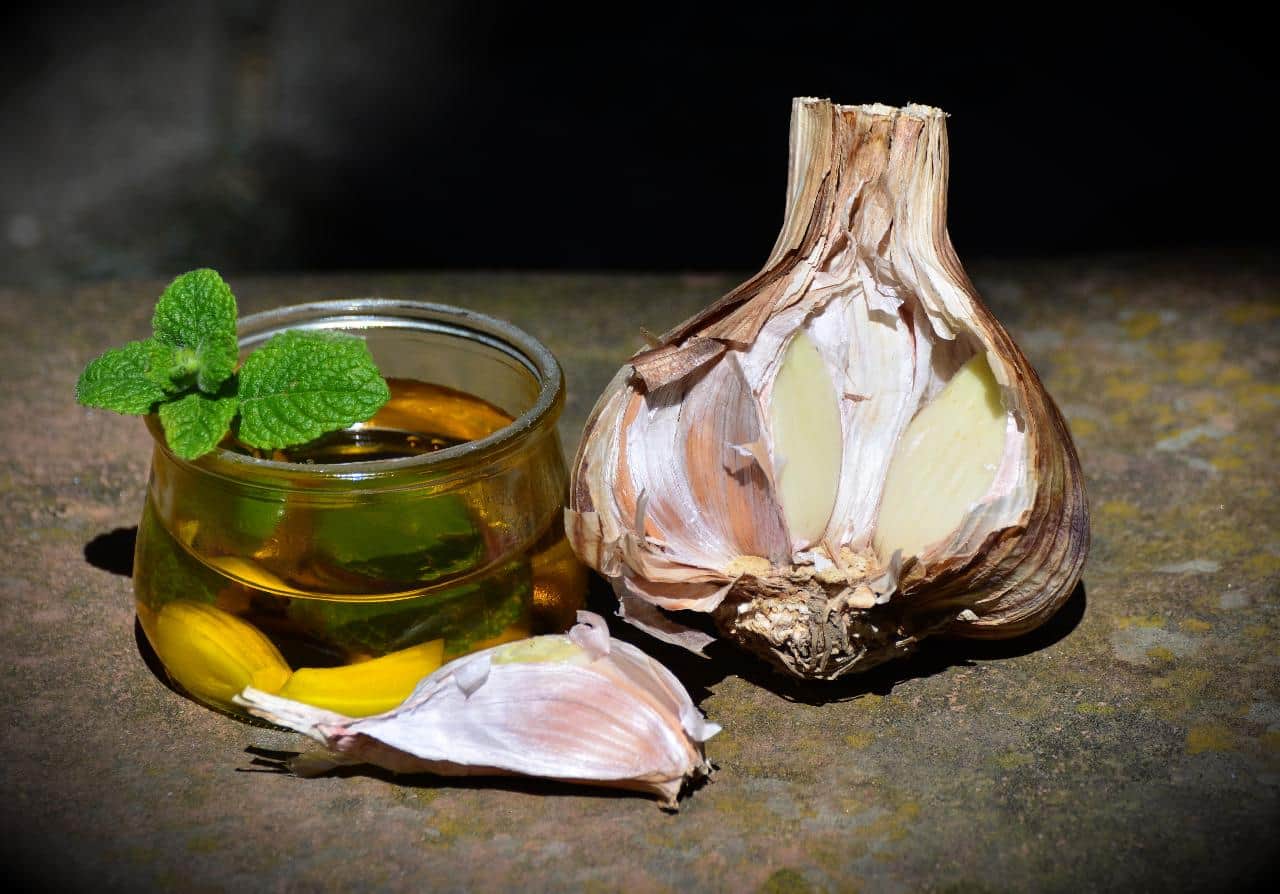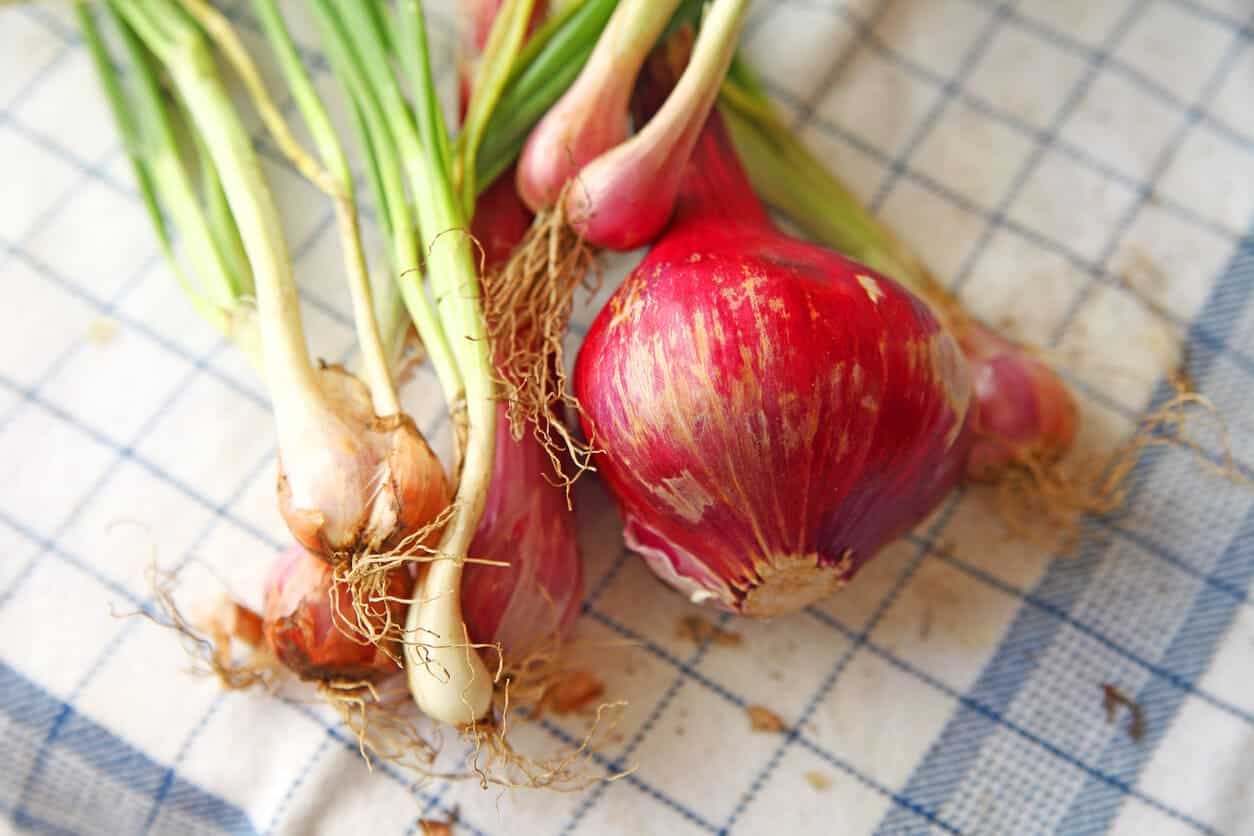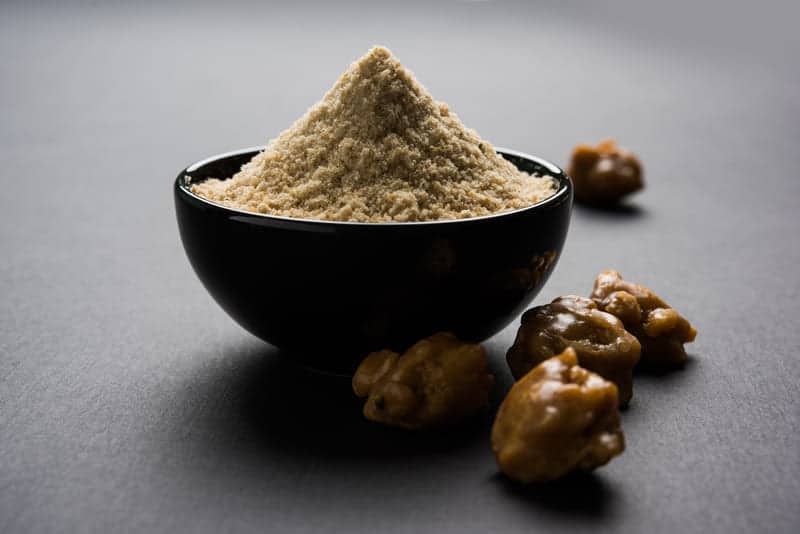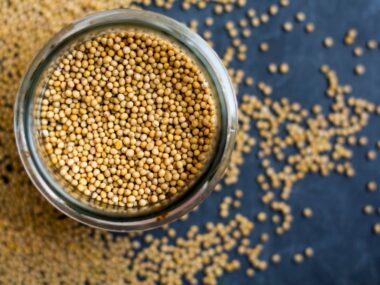Many recipes call for garlic because of the distinctive flavor it adds to the food.
You can find garlic in different forms such as fresh, minced, powdered, granulated, garlic salt, and garlic juice. They all give a similar flavor to the fresh garlic. However, they have a different texture.
Granulated garlic is nothing but dehydrated ground garlic and can be used in different recipes as a substitute for fresh garlic. You can also use garlic in other forms instead of granulated garlic.
Some of the best-granulated garlic substitutes include garlic powder, garlic flakes, minced garlic, garlic salt, fresh garlic, garlic-infused olive oil, and garlic juice.
You can also use shallots, garlic chives, and asafoetida powder in your recipes to improve their flavor.
Granulated garlic is usually used in liquid recipes such as sauces, dressings, stews, and soups. It is also used in different spice mixtures because it has a coarse texture and mixes easily with the other spices.
Now, let’s learn more about some of the greatest substitutes for granulated garlic.
Best Granulated Garlic Substitutes
Granulated garlic can be found in many different types of dishes. However, if you do not have it on hand, you can use some of the following substitutes.
1. Garlic powder
Garlic powder is made of dehydrated garlic that is later grounded into a fine powder. It has concentrated garlic flavor and is usually used in sauces, soups, marinades, sauces, and stews.
Garlic powder and granulated garlic are made of dehydrated garlic. However, they have a very different texture.
Garlic powder has a fine texture while granulated garlic has a coarser texture and because of their different texture, they can’t be used in a 1:1 ratio.
Meaning, if your recipe calls for 1 teaspoon of granulated garlic, you can use ½ teaspoon of garlic powder instead.
2. Garlic flakes
Garlic flakes are another substitute for granulated garlic you can use to give a lovely garlic flavor to your dish. They are made of dehydrated pieces of minced garlic.
It is best to use them in liquid recipes because they will soften and add garlic flavor to your dish. Garlic flakes work well in stews, soups, casseroles, sauces, braises, and curries.
If your recipe calls for 1 teaspoon of granulated garlic, you can use 2 teaspoons of garlic flakes instead to improve the flavor of your dish.
3. Garlic salt
Garlic salt is made with 3 parts of salt and 1 part of garlic powder.
Therefore, you should use it in smaller quantities. Otherwise, you can make the dish too salty. Garlic salt has a mild garlic flavor and is usually used in soups, salad dressings, meat marinades, dry rubs, grilled vegetables, and many other dishes.
You can use 1 teaspoon of garlic salt as a substitute for ¼ teaspoon of granulated garlic. You will also have to reduce the salt added in the recipe by ½ teaspoon to prevent it from becoming too salty.
4. Minced garlic
Minced garlic is chopped fresh garlic which is preserved in oil or water. It is packed in jars and has a weaker garlic flavor than fresh garlic. However, you can add it to dressings, sauces, stir-fries, marinades, stews, and many other dishes.
Instead of ¼ teaspoon of granulated garlic substitute ½ teaspoon of minced garlic.
5. Fresh garlic
Fresh garlic is also one of the options you can use as a substitute for granulated garlic.
It has a different texture and sweeter flavor than granulated garlic. Thus, it is better to use it in sauces, stir-fries, soups, and other recipes that involve sautéing of the fresh garlic.
Note that it will be hard to use fresh garlic in marinades, cream-based soups, or salad dressings without pressing it with garlic press first.
If the recipe calls for ¼ teaspoon of granulated garlic use 1 clove of fresh garlic.
6. Garlic juice
Garlic juice is an ingredient made from the juice of fresh garlic. You can add it to soups, sauces, stir-fries, stews, marinades, and many other dishes.
Because garlic juice has a stronger flavor than granulated garlic, to substitute ½ teaspoon of granulated garlic use ¼ teaspoon of garlic juice.
Garlic juice is in liquid form. Therefore, if you are using more of it in sauces you will need to use some kind of thickener.
7. Garlic infused olive oil
Garlic-infused olive oil can be also used instead of granulated garlic.
You can add it to various soups, roasted meats, pasta dishes, dressings, mashed potatoes, marinades, stir-fries, and other different dishes instead of the regular oil.
You can also drizzle some garlic oil at the end of the cooking to obtain a stronger garlic flavor. Garlic-infused olive oil will give a nice roasted garlic flavor to your dishes and make them taste even better.
Instead of ½ teaspoon of granulated garlic, you can use 1 tablespoon of garlic-infused olive oil, and add more to taste if needed.
8. Garlic chives
Garlic chives are herbs with a strong garlic flavor and are usually used in dishes like stews, soups, stuffings, stir-fries, meat marinades, and salads.
To get the most of their flavor garlic chives are added at the end of the cooking time.
If you use garlic chives as a substitute for granulated garlic, you will experience a fresh and garlic flavor in dishes like salads, casseroles, soups, and stews.
Instead of ¼ teaspoon of granulated garlic, you can use 1 tablespoon of chopped garlic chives in your recipe.
9. Shallots
Shallots are a type of onion with a sweet and delicate onion and garlic flavor.
You can fry, sauté, roast, or use shallots raw as a garnish in various stir-fries, salads, soups, casseroles, sauces, and meat marinades.
Shallots as a substitute for granulated garlic will not give the same flavor to the dish. However, they will add some garlic hints.
Substitute ¼ teaspoon of granulated garlic with 1 tablespoon of chopped shallots.
10. Asafoetida powder
Asafoetida powder has a very distinctive strong smell, which mellows when it is cooked and becomes similar to garlic and leeks.
To bring out its best flavor and reduce the bitterness and smell, asafoetida powder should be first cooked in some hot fat like butter, oil, or ghee.
You can get a delicious umami flavor if you add other spices such as cumin seeds, cardamom, or fennel seeds, which pairs well with the flavor of asafoetida powder.
Asafoetida powder works well in dishes with vegetables and dried beans. But you can also add It to salad dressings, fish, and egg dishes.
Instead of 1 teaspoon of granulated garlic use ¼ teaspoon of asafoetida powder.
Granulated Garlic vs Minced Garlic: What’s The Difference?
The main difference between granulated garlic and minced garlic is the texture.
Granulated garlic is made from dried and ground garlic, while minced garlic is fresh minced garlic and has a coarser texture than granulated garlic.
You can find granulated garlic in spice mixtures with a fine texture, while minced garlic is used in spice mixtures with coarse textures.
Overall, granulated garlic is a dry version of minced garlic.
Granulated Garlic To Cloves
Granulated garlic has a more concentrated and potent flavor, while cloves have a sweeter and mellower flavor than granulated garlic.
You can use them as each other’s substitute in many different dishes.
Related Questions
Is there a difference between granulated garlic and garlic powder?
Granulated garlic and garlic powder have different textures. Garlic powder has a flour-like texture, while granulated garlic has a coarser texture.
Can I substitute granulated garlic for minced garlic?
You can substitute granulated garlic for minced garlic because granulated garlic is ground dried garlic. Therefore, it is dissolved faster than minced garlic. You can use it in many different dishes.
What is granulated garlic?
Granulated garlic is coarsely ground dried garlic, used as a seasoning in sauces, dry rubs, soups, and other dishes.
Is granulated garlic the same as onion powder?
Granulated garlic is not the same as onion powder. Onion powder is made from dried and grounded onions, while granulated garlic is made from dried and grounded garlic.
Final Tips
Granulated garlic is used in many dishes to give them a beautiful garlic flavor. You can also combine it with other herbs and spices to get even better different flavors.
However, if you don’t have it on hand, you can use some of these substitutes because they all have garlic flavor. Just make sure to use the substitute that works best in your recipe.
